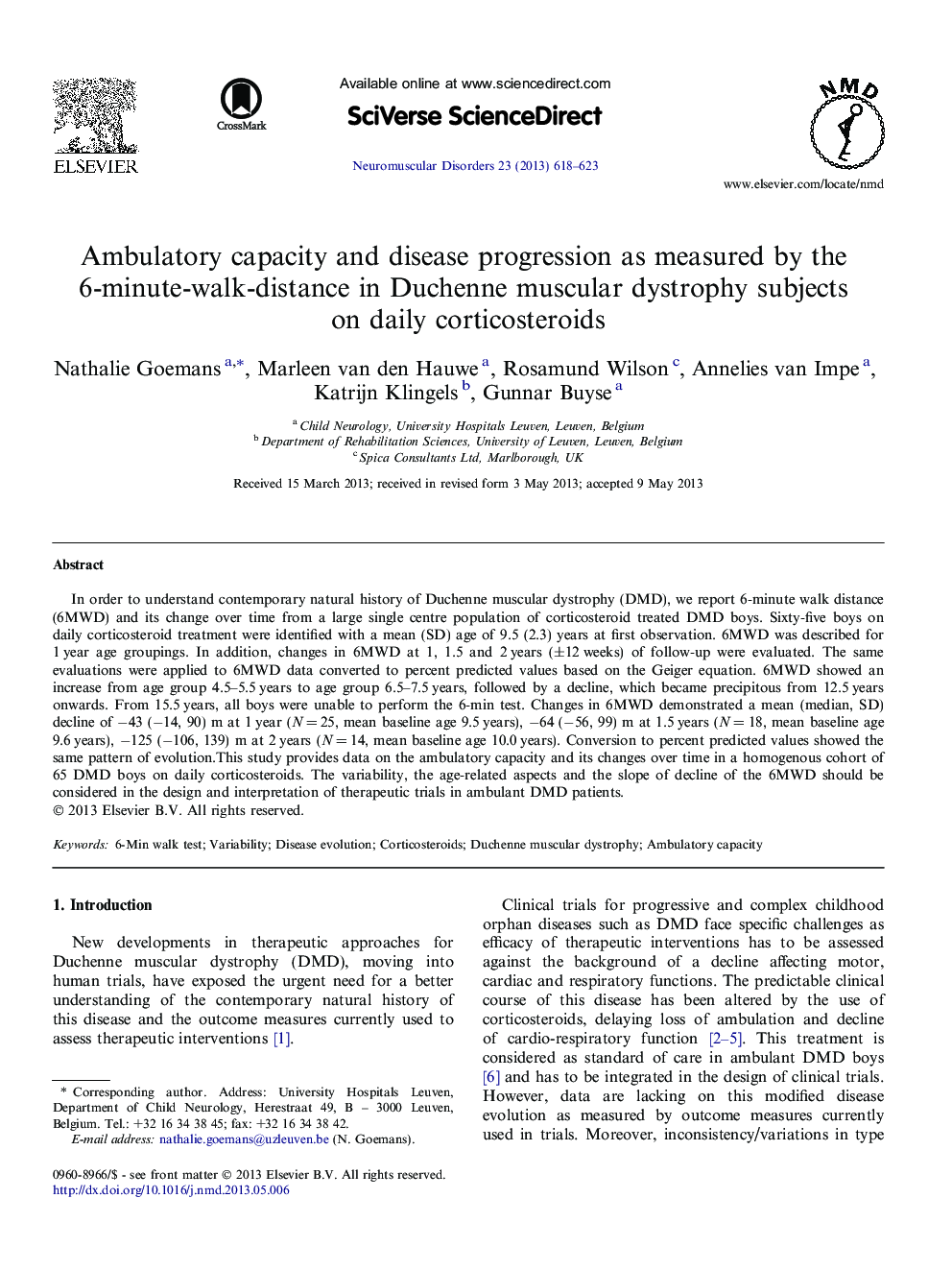| Article ID | Journal | Published Year | Pages | File Type |
|---|---|---|---|---|
| 6041583 | Neuromuscular Disorders | 2013 | 6 Pages |
Abstract
In order to understand contemporary natural history of Duchenne muscular dystrophy (DMD), we report 6-minute walk distance (6MWD) and its change over time from a large single centre population of corticosteroid treated DMD boys. Sixty-five boys on daily corticosteroid treatment were identified with a mean (SD) age of 9.5 (2.3) years at first observation. 6MWD was described for 1 year age groupings. In addition, changes in 6MWD at 1, 1.5 and 2 years (±12 weeks) of follow-up were evaluated. The same evaluations were applied to 6MWD data converted to percent predicted values based on the Geiger equation. 6MWD showed an increase from age group 4.5-5.5 years to age group 6.5-7.5 years, followed by a decline, which became precipitous from 12.5 years onwards. From 15.5 years, all boys were unable to perform the 6-min test. Changes in 6MWD demonstrated a mean (median, SD) decline of â43 (â14, 90) m at 1 year (N = 25, mean baseline age 9.5 years), â64 (â56, 99) m at 1.5 years (N = 18, mean baseline age 9.6 years), â125 (â106, 139) m at 2 years (N = 14, mean baseline age 10.0 years). Conversion to percent predicted values showed the same pattern of evolution.This study provides data on the ambulatory capacity and its changes over time in a homogenous cohort of 65 DMD boys on daily corticosteroids. The variability, the age-related aspects and the slope of decline of the 6MWD should be considered in the design and interpretation of therapeutic trials in ambulant DMD patients.
Related Topics
Life Sciences
Neuroscience
Developmental Neuroscience
Authors
Nathalie Goemans, Marleen van den Hauwe, Rosamund Wilson, Annelies van Impe, Katrijn Klingels, Gunnar Buyse,
